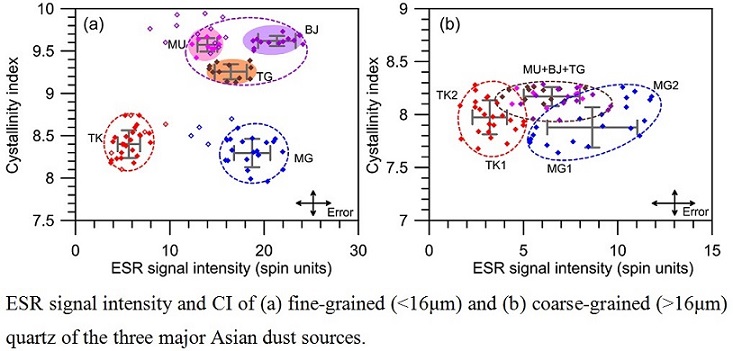Electron Spin Resonance (ESR) signal intensity and Crystallinity Index (CI) of fine- (<16 μm) and coarse-grained (>16 μm) quartz were measured in surface samples from the Taklimakan desert in western China, the Badain Juran, Tengger and Mu Us deserts in northern China, and the Gobi desert in southern Mongolia to evaluate whether these geophysical parameters can serve as reliable provenance tracers of Asian dust. The results indicate that spatial variability of both ESR signal intensity and CI is evident within the Taklimakan deserts and the Mongolian Gobi, but less significant in the three deserts of northern China. Coarse-grained quartz from the Mongolian Gobi and northern China deserts can be differentiated from the Taklimakan desert using the ESR signal intensity. Fine-grained quartz originating from three major Asian dust sources, i.e., the Gobi-sandy deserts in western China, northern China and southern Mongolia, can be distinguished effectively using the combination of ESR and CI signals. Our results suggest that ESR signal intensity and CI can discriminate the sources of fine-grained quartz better than coarse-grained quartz, providing an effective approach to trace the provenance of fine-grained dust deposition on the land and in the ocean.

 © 2015 Institute of Earth Environment,CAS
© 2015 Institute of Earth Environment,CAS Address:No. 97 Yanxiang Road, Xi'an 710061, Shaanxi, China

 Location :
Location :